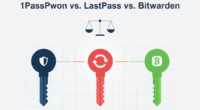As you begin to use AI, you will quickly realize one thing: the quality of your output depends almost entirely on the quality of your input. In other words, learning to communicate with AI is the single most important skill you can develop. This skill is called “prompt engineering,” but you do not need to be an engineer to master it. At its heart, it is about learning how to ask questions clearly. This guide, therefore, will teach you the simple techniques you need to start writing truly effective prompts today.
The Basic Formula for Effective Prompts: Subject + Style + Context
Before we get into specific tips, it is helpful to have a basic formula in mind. Most effective prompts, whether for text or images, contain three key ingredients.
- Subject: First, what is the core topic or thing you want the AI to create? Be clear and direct.
- Style: Next, what should the output look or sound like? This could be a tone of voice (like “professional” or “funny”) or an artistic style (like “photorealistic” or “cartoon”).
- Context: Finally, what background information does the AI need? This could include the target audience, the goal of the content, or specific details to include.
Ultimately, mastering the blend of these three elements is the foundation of writing great prompts.
Tip 1: Be Specific for More Effective Prompts
The biggest mistake beginners make is being too vague. An AI does not have intuition or common sense; it only knows what you tell it. Therefore, the more details you provide, the better your result will be. This is a core principle for creating effective prompts.
For example, instead of saying “Write a blog post about coffee,” a much better prompt would be: “Write a 500-word blog post about the benefits of drinking black coffee. The tone should be friendly and informative, aimed at people in their 20s who are new to coffee.” As you can see, that extra detail gives the AI a clear roadmap to follow.
Tip 2: Use a “Persona” for Highly Effective Prompts
A powerful technique for getting a specific tone and style is to tell the AI to act as a certain character or expert. This is one of the secrets to writing highly effective prompts. By giving the AI a role, you are providing a huge amount of context in a very short sentence.
For instance, you could start your prompt with, “Act as a friendly, expert tour guide…” or “You are a professional copywriter specializing in luxury brands…” Consequently, this immediately frames the AI’s response, leading to a much more focused and appropriate output. It is the difference between getting a generic answer and getting an expert one.
Tip 3: Provide Examples and Constraints
Sometimes, the best way to show the AI what you want is to give it an example. This is called “few-shot prompting.” For example, if you want the AI to write product descriptions in a specific format, you can provide one or two examples of your desired style first. Major platforms like OpenAI often provide documentation on these advanced techniques.
In addition, it is also important to set boundaries. You can tell the AI what *not* to do. For instance, you could add “Do not use technical jargon” or “Keep the sentences under 15 words.” These constraints help guide the AI and prevent it from going off-topic.
Tip 4: The Power of Iteration for Effective Prompts
Your first prompt is rarely your last. In fact, it is best to think of the process as a conversation. Your initial prompt is just the starting point. Based on the AI’s response, you can then refine your request. For example, you can ask it to make the tone more formal, expand on a specific point, or try a different approach. As you learn what an LLM is, you realize it is a tool that responds to guidance. This back-and-forth process is where you will learn the most and achieve the best results.
A “Before and After” Example of Effective Prompts
Now, let’s put it all together. Here is how you can transform a basic prompt into a much more effective one.
- Before (Weak Prompt): “Write an email about our new product.”
- After (Effective Prompt): “Act as a friendly marketing manager. Write a 150-word email to our existing customers announcing our new ‘EcoMug’. The tone should be excited but professional. Mention that it’s made from recycled materials, is 100% leakproof, and is available in three colors: Forest Green, Ocean Blue, and Sandstone. End with a clear call to action to ‘Shop Now’ with a 10% discount code.”
As you can see, the second prompt provides a clear role, specific details, a target audience, and a desired outcome.

Conclusion: Prompting is a Conversation, Not a Command
In conclusion, learning how to write effective prompts is less about technical skill and more about clear communication. It is a new form of literacy for the AI era. By being specific, providing context, giving the AI a role, and refining your requests, you can unlock the full creative potential of these incredible tools. Remember, it is not just a command you are giving; it is the beginning of a creative conversation.
Share Your Best Prompting Tip!
Do you have a favorite technique for getting great results from AI? Share your best tip in the comments below to help the community learn together!







